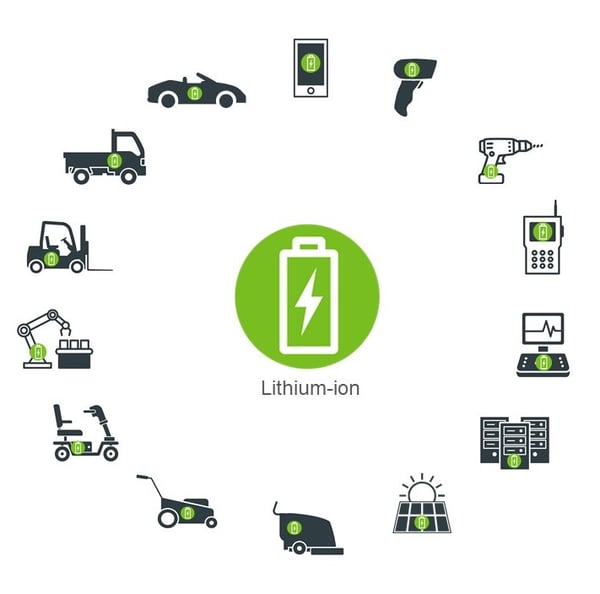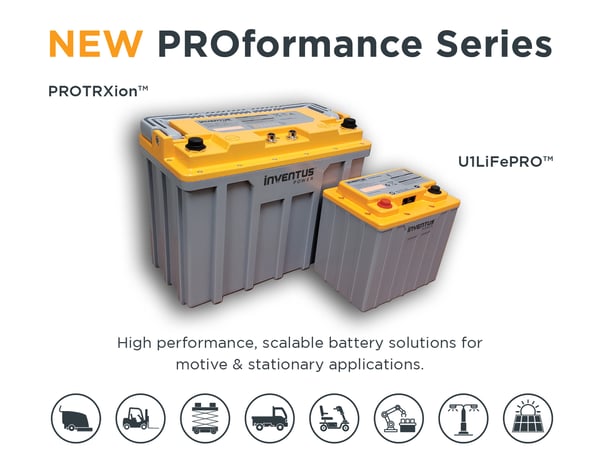For 60 years, Inventus Power has helped customers transition to new battery technologies. In our final staff interview commemorating our 60 year anniversary, Chris Turner (CTO), reflects on some of the company's major milestones and industry growth trends as well as shares his future outlook for Inventus Power.
Can you tell us about your role at Inventus Power?
Chris: As Chief Technology Officer, I work with our teams to identify, develop, and integrate new technology into next-generation products and systems. I have over 20 years of multi-disciplined battery industry experience, including battery technology development and strategic development of rechargeable power systems.
From your perspective, what are some milestones or events in Inventus Power’s history that you feel are most significant?
Chris: When I started with the company 15 years ago, I remember a pie chart that showed less than 20% of our non-consumer customers were using lithium-ion (Li-ion). Most were still using Nickel Metal Hydride, Nickel Cadmium, or Lead Acid. We have helped markets, such as medical, industrial, and military, transition safely and reliably to Li-ion over that time. This is something we take for granted because we’ve been incorporating Li-ion into nearly every product for so many years. Looking back, we should be proud of this transition as it truly benefited our customers and created a strong foundation for our future growth.
What growth trends are you seeing take place within the Li-ion industry and how is Inventus Power adapting?
Chris: I am very excited about the recent launch of our new standard battery packs for motive & stationary applications - the PROformance Series. Traditionally, we have developed custom-designed products for each customer based on their specific requirements. As battery systems become larger and more complex, offering standard platforms from a hardware perspective, while being able to customize the software for each customer’s needs, is a game-changer for our industry. For larger batteries (kWh scale), incorporating our standard battery solution saves our customers a significant amount of development time and non-recurring engineering (NRE) costs. I believe this is a trend that will continue to grow in our industry.
You recently joined the PRBA as a board member. Can you briefly tell us about this organization and how Inventus Power supports its mission?
Chris: The PRBA (Rechargeable Battery Association) is a non-profit trade organization that was originally established by battery manufacturers to find solutions for recycling of batteries. Today, the PRBA serves as the voice for the Rechargeable Power Industry representing its members on legislative and regulatory issues at state, federal, and international level. The membership is well rounded with battery manufacturers and users represented. The organization will be celebrating its 30th anniversary in 2021.
Batteries, especially Li-ion batteries, have become ubiquitous in our society. One of the goals of the PRBA is educating and helping bring together all stakeholders (government and industry) so that we can work together to develop solutions that ensure the safe transportation, use, and recycling of batteries. At Inventus Power, we see a growing need for solutions to encourage and enable widespread recycling of Li-ion batteries. We believe these can be market-based solutions that are sustainable over the long term.
Li-ion is the dominant rechargeable battery chemistry today. What are your thoughts on industry adoption of emerging technologies, such as lithium-sulfur, solid-state, and others?
Chris: I believe that the Li-ion we know today will still be the dominant solution for the foreseeable future. The manufacturing scale and cost effectiveness of Li-ion will continue to support its dominance in the market. That being said, we are seeing a shift by the major manufacturers of cylindrical cells (18650 and 21700) to focus on electric vehicles (especially Tesla) and power tools. This is creating a very tight supply situation for 18650s, especially next year, and this may lead to more use of alternative form factors and suppliers.
In terms of emerging technologies, I am very optimistic about solid-state batteries. The potential safety benefit of solid-state aligns very well with our customer base, especially in medical and military markets, but would be highly valued by all of our customers. Because solid-state technology can be somewhat independent of cathode/anode material, I really think it will be commercialized sooner rather than later.
To improve the energy density, we are also working with partners on high silicon content anode cells. Due to the inherent challenges of silicon (anode expansion, cycle life, and even safety), this has perhaps been slower to develop than everyone thought. But, we do see that there are solutions which we think are commercially viable in the near term. These cells could achieve 800-900 Wh/L realistically in the near future.
What excites you most about the future of Inventus Power?
Inventus Power is 60 years old with a solid foundation. Our core business continues to grow with our established, long-term customers. I am also excited about what is in front of us. As we see the conversion of older technologies like Lead Acid or gasoline powered engines to lithium-ion, there are opportunities for growth in many new markets. Markets that were not considered even a few years ago are now very real for Inventus Power.
There is also so much growth in batteries outside of the EV market that many outside our industry are only just starting to understand. Similar to how we have helped transition medical, military, and other markets over the last 15 years to lithium-ion, we are helping a whole new generation of markets and products make a similar transition to Li-ion and/or the next generation of Li-ion. Being able to participate in another big transition like this and help provide new battery solutions for these markets is truly exciting for all of us at Inventus Power.


